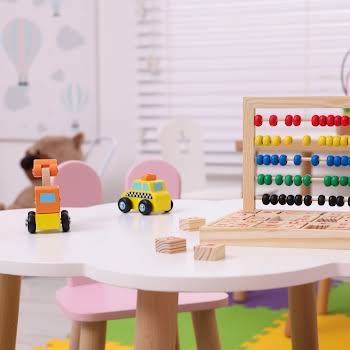
Deconstructing anxiety in children: Why listening, *really* listening, helps
By Julie Meehan
28th Aug 2022
28th Aug 2022
In the fourth part of a new series, Clinical Psychologist and Parent Guide, Dr Julie Meehan breaks down the importance of listening, *really* listening to our children,.
Strategy #4
We know so much about the neuro-biological and psychological mechanisms of anxiety and yet it never ceases to amaze me how mysterious and mercurial it can still feel. Sometimes anxiety can be staring us in the face and we don’t see it. Or else we think we have a grip on it and next thing… it slips from our grasp and shapeshifts into another side of anxiety we never even knew existed. Its apparent mystery and quicksilver nature can leave us feeling defeated, disempowered and at a loss at what to do.
The power in deconstructing anxiety
That’s why it’s so important to break down our approach to anxiety into its component parts. When he can see each part for what it is and take each component as a step, it is then that the veil of obtuseness around anxiety can drop and we can sense the small wins that in time, we hope, will lead to bigger wins.
Advertisement
The steps we have looked at already in demystifying anxiety are: 1) recognising the signs, 2) ‘naming it to tame it’, and 3) working with the avoidance trap. The next strategy is all about listening.
Like, really listening.
Active listening
In my workshops with parents, I often do an active listening exercise. Parents pair up, and I invite them to each pick an everyday annoyance that they are willing to talk about for three minutes – not a whopper annoyance requiring 30 sessions with a psychologist, but something that’s bothering them that they would like to get off their chest. They take it in turns. One parent talks and the other parent listens for three minutes. The rules are that the listening parent cannot interrupt the talker and cannot attempt to ask questions or fix the situation. Their job is to listen. After three minutes, each pair switches and the listener becomes the talker.
I love watching these exchanges going on and I love hearing the feedback afterwards. Many parents report that they found it almost impossible to just listen and not interject with comments, ways to empathise, qualifying questions or solutions. Many advise that when they were in the talking role they discovered that when they had the uninterrupted space to just talk, they often came to their own resolution or conclusion about their everyday annoyance… that being listened to, really listened to, was enough for them to reach a new sense of understanding and peace about the issue.
Listen first, problem solve second
Advertisement
And that is what active listening is all about: it’s being really present for the talker, and allowing them to talk without trying to intervene, interrupt, empathise, or fix the situation. Listening is therapeutic. Listening is a form of connection, and as I have been saying ad nauseum, connection helps to regulate and calm our nervous systems. When we feel more regulated, our brains feel more integrated – they work better – and we can problem solve more easily.
We are all wired differently, and let’s face it, not all of us are gifted with the natural ability to sit and listen for long periods of time.
What’s more, busy family and working lives aren’t really conducive to sitting and looking deeply into your child’s eyes each time they tell you they don’t want to go to school or they had yet another row with their sister whilst also scraping bits of cornflakes out of the dishwasher filter and simultaneously booking an emergency dental appointment all at the same time.
But that’s often when your child brings their difficulties to you. Life is even less conducive to actively listening to your child when they are not talking, when they are not telling you a thing.
So how, in any of those situations, do you really listen?
Begin with you: The best practice-ground for learning to be receptive to listening is with ourselves. As boring and un-sexy as it sounds, when we learn to tune into our bodies, into our emotions, into our real intuition and to be patient and prepared for what we might not want to hear, listening, in general, becomes easier. When we self-connect our children feel it too.
Advertisement
Body talk: Applying the listening strategy is where we get to bring some of the other strategies I have suggested into use. Remember recognising the signs? Especially the not-so- obvious signs like sore tummies and resistance? Your child may not be telling you in so many words that they are feeling anxious (remember they may not even know themselves) but their bodies and their behaviours are speaking. Learning to tune into the many ways that anxiety communicates to us is vital. And learning to name it with you child in that curious, wondering way – even when you are being ignored by them or your suggestion it is strenuously denied – shows your child that you are listening.
Listening time: Worrying is another way that anxiety communicates. Some of us are worriers, some are not. Some of our children are, some are not. Worrying is the ultimate drainer, not only for our children, but for us too, especially if your child seeks you out constantly to share with you every niggle, doubt or concern they have. Life just doesn’t have that many minutes in it. If you find yourself in this situation, it can be very helpful to introduce a particular time in the day where your child knows that they can come to you and talk to you about their worries. A 15-minute window where you can ensure that you are fully available to your child. You can agree a time with your child and let them know that if a worry comes to them during the day, they can make note of it and ‘park’ it until later, knowing that they can give it full air-time with you. This is where we bring in our active listening skills and just listen to them.
The magic about this approach is that if you allow your child to talk their way right through the worry, they often come up with a solution themselves. They often just need an open, non-judgemental listening ear. But sometimes they do need some help in how to problem solve. When they are finished talking, you can ask them, “Do you feel like you can work this out yourself, or would you like us to problem solve together?” If the answer is “yes”, remember to work collaboratively, allowing your child to lead where possible.
They may not even need to use the time at all to talk about their worries but knowing that you are there and available if they need you can be grounding.
Start small: listening time doesn’t work for everyone and that’s ok. We are wonderfully diverse for a reason. If you are finding it hard to tune in and listen, start with the really small things: flag to yourself that you are going to ask your colleague how they are today and you’re going to really listen to their reply. Or out of the 17 things your child approaches you with to solve before you even leave the house in the morning, pick one of those things to actively listen to – not them all, just one thing. See how it feels. Get a sense of how your body feels when you consciously decide to tune in and fully listen, if even for 60 seconds.
And remember, the more we listen to ourselves, the more we trust ourselves. The more we trust ourselves, the more we can model this to our children. The more we listen to our children, the more we show them that we trust them. The more we trust them, the more they trust themselves.
Advertisement
And the foundation of well-being is trust.

© Julie Meehan, 2022
Dr Julie Meehan is a Clinical Psychologist, Parent Guide and (Imperfect) Parent.
Advertisement
Dr Julie has developed an evidence-based, step-by-step pathway for parents to follow that guides you to create more connected and trusting relationships with yourself and your child, allowing you both to meet and grow from life’s challenges, and to thrive.
You can follow The Pathway Home for Parents through Online Self-study Courses, Live Programmes and through Dr Julie’s One to One Parent Guidance Packages on www.juliemeehan.com
Follow Dr Julie on:
Instagram: @drjuliemeehan
Facebook: Dr Julie Meehan























